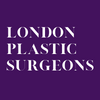How to Treat Blepharoplasty Lumps after Eyelid Lift Surgery
The shape of your eyelids has a major impact on the appearance of the eyes. Lower eyelids that are too saggy giving the appearance of under eye hollows and bags, or upper eyelids that are so thick that they form a hood over the eye can have a negative effect on the aesthetics of the eye. To get rid of these aesthetically displeasing features, you can choose to undergo a blepharoplasty or eyelid surgery.
Mr Mark Gittos is one of the top plastic surgeons in UK for eyelid lift surgery. He has profound knowledge of facial anatomy and aims to help patients achieve their aesthetic goals using different surgical and non-surgical procedures.
Download Mr Mark Gittos’ Guide to Eyelid Lift Surgery – Blepharoplasty
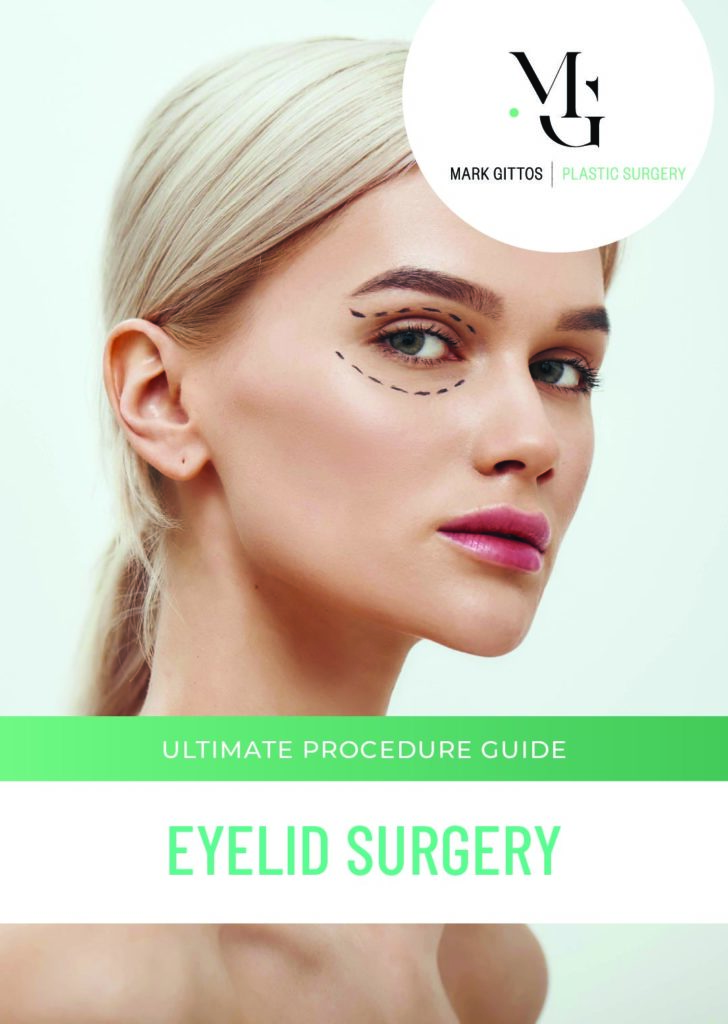
What is a Blepharoplasty procedure?
A blepharoplasty procedure is a cosmetic surgery procedure that removes excess skin from the upper and/or lower eyelid with the purpose of rejuvenating the appearance and removing the tired look from the eye. The eyelid’s excess saggy skin results from several factors, but mainly ageing.
As we age, the elastin and collagen levels in the body begin to reduce which in turn results in the loss of structural integrity of the skin. This loss is further exaggerated in the sensitive skin around the eyes and the neck. In fact, these two regions are the first to experience the side effects associated with reduced elastin and collagen.
Who is a Good Candidate for a Blepharoplasty Procedure?
There are several main reasons why people choose to undergo a blepharoplasty procedure. These are mentioned below:
- Excess skin on the upper eyelids that restricts peripheral vision
- Excess skin on the lower eyelids
- Under eye bags
The ideal candidate for a blepharoplasty procedure is someone who suffers from either one or more of these conditions. Moreover, there are other criteria that the ideal candidate needs to meet, such as:
- Physically and mentally healthy
- A non-smoker, or willing to quit smoking at least six weeks prior to the surgery
- Aware of the complications of the procedure
- Undergoing the procedure for personal reasons and not to fit into a trend
Benefits of a Blepharoplasty Procedure
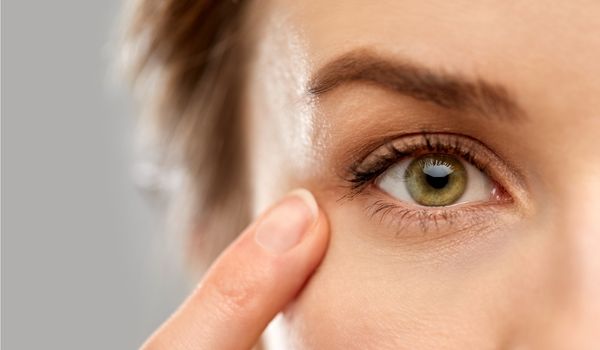
A blepharoplasty procedure has many benefits ranging from medical to psychological. People who are unhappy with the appearance of their eye bags due to saggy eye skin can become self-conscious and lose confidence in their appearance. This can affect their personal life and social relationships.
Undergoing an eye bag removal surgery can do wonders for a person’s confidence and help them regain their self-esteem. It also helps them become more confident in their appearance and that is worth the procedure. They also are more likely to put themselves out there and engage in social relationships.
Eye bags often develop due to the skin losing the elastin and collagen it requires to maintain its strength. They are further aggravated by the loss of strength in the muscles around the eye. They can put a strain on the eye and cause pain to the eye.
Furthermore, eye bags or hooded eyes can cause vision impairment, especially peripheral vision. They can obstruct the views from the side of the eye and make it difficult to see. On top of that, extremely hooded eyelids can also ruin the aesthetics of the eyes.
However, undergoing the blepharoplasty procedure can remove the hooded eyelid and give you back the full vision. Removal of excess skin from the upper eyelid will also improve the appearance of the eyes.
Bumps and Lumps after Blepharoplasty Procedure
After the blepharoplasty procedure you may find the presence of bumps and lumps. The eyelid skin is so thin that even the smallest bump can become very prominent and visible. These bumps are caused by a wide variety of reasons, which are mentioned below.
If you notice a lump on your eyelid, after your blepharoplasty procedure, then it is extremely important that you consult your plastic surgeon about it. Do not try to pop the bump or poke at it as that can worsen the bump and in certain cases, alter the results of your procedure.
Bumps are considered to be a normal part of the healing process and at certain times they resolve spontaneously. However, sometimes they can be caused by a serious underlying issue and will not resolve without medical intervention.
What Causes Lumps after Blepharoplasty?
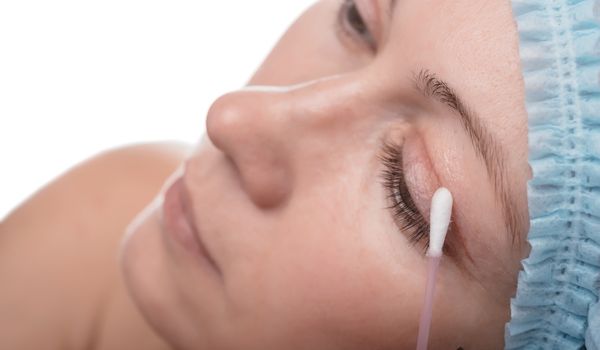
The most common cause for a bump after the blepharoplasty procedure is scar tissue. It is important to know that the incision scar may significantly worsen in appearance, often looking like a red raised bump, before it begins to heal. This type of bump does not need any care or treatment. Your surgeon will give you instructions about incisions care before you are released from the medical facility where the procedure was performed.
As the scar heals, the bump will heal too. But the scar can take up to 4 months to completely heal. During this time, you can facilitate the healing process by moisturising daily to help soften the scar.
However, there is the possibility of a keloid forming after the incision has completely healed. Keloid is an excessive scar growth after the incision has healed. They can be off-putting and require revisional surgery to get rid of. Keloids are a rare complication of eyelid surgery though.
Some of the other causes of a bump are:
- Sutures used during the procedure
- Reaction to the healing gel used
- Growth of microorganisms
- Accumulation of foreign bodies due to the ointments used
Classification of Eyelid Lumps
The lumps that can form after the blepharoplasty procedure are classified based on the cause of the lump. As discussed above, there is a wide range of causes for these lumps. According to these causes, the lumps can be:
- Haematoma: a blood accumulation which is a common reaction after any surgical procedure, not just blepharoplasty
- Seroma: this is the result of fluid accumulation around the incision site and is another common reaction after most surgical procedures
- Stye or chalazion: this is a bump caused by a blocked oil gland. It is common amongst those who have never undergone eye surgery and most often, antibiotic eye drops alone are enough for the treatment of the condition
- Fat nodule: this kind of bump only develops under two circumstances. First, it happens after an eyelid surgery only and only if you had fat grafted into the area. Secondly, it can happen if you have high cholesterol and these kinds of bumps can form even in those who have not undergone eye surgery
- Abscess or other forms of bacterial infection: infection at the incision site is the most common complication of all surgical procedures. When a bacterial infection progresses into an abscess, it can appear as a bump often with pus
Treatment of Lumps after Blepharoplasty
Treatment of lumps is very specific to the cause of these lumps. As mentioned above, if the lump is due to scar tissue, then moisturising the area and massaging it alone is sufficient for the proper treatment of the lump. A moisturiser will soften the scar tissue and make it easier for the limp to dissolve completely.
To massage the scar tissue, it is important to wait till the sutures have been removed and the scab has fallen off. Then, using the soft parts of the fingers, massage in circular motions.
Some of the other treatment options based on their causes include:
- Haematoma dissolving gel can help get rid of the haematoma. You can also try massaging the area to improve circulation
- A seroma can be treated with proper massage to get rid of the fluid accumulation
- A stye can either be surgically excised or treated with antibiotic eye drops
- A fat nodule also needs to be excised surgically. There is no other option for a fat nodule and a fat nodule has to be treated as soon as possible to prevent any complications
- An abscess needs to be drained for best results and then, a course of antibiotics needs to be taken so that the bacterial infection is completely treated. If not drained properly, the infection can reoccur and cause more complications
FAQs about Blepharoplasty

Are you awake during blepharoplasty?
- The blepharoplasty procedure is performed under local. This means that you will be completely awake during the blepharoplasty procedure but you won’t feel any pain as the skin will be numbed with anaesthesia first.
How do you get rid of lumps after blepharoplasty?
- Depending on the cause of the lump, the treatment of blepharoplasty can be determined. If the lump is part of the natural scar or it is just because of the healing process, then no specific treatment is required. They will dissolve as the incision heals. However, you can apply hydrating lotions and moisturisers to facilitate the treatment of lumps.
How long do bumps last after eyelid surgery?
- Bumps only last as long as the recovery period is, which is up to 2 weeks. However, in some cases, the bumps can stay for as long as the eyelids fully heal which can take up to three months. Cortisone injections can be used to facilitate the healing process.
How do you massage scar tissue after blepharoplasty?
- Before you massage the scar, you need to know that it can only be done after the sutures have been removed and the crusty scab has fallen off. After that, you can use the soft part of your fingers to gently massage the scar tissue. Make sure to also massage the area around the scar tissue as that is equally important. Always massage in circular motions as that will ensure proper circulation which will then improve the blood supply and facilitate the scar healing process.
Can you get keloids from blepharoplasty?
- Keloids can form after any incision or injury. However, with blepharoplasty, the risk of developing keloids is very low.
Why is there a hard lump under my incision?
- A hard lump under your incision after a blepharoplasty can occur due to many reasons. Most often, it is because of the remaining lymphatic fluids in the region and this will heal spontaneously. It can also be because of scar tissue, which also will heal on its own. In some cases, a hard lump can be a stye which is an inflamed oil gland, or fat that wasn’t properly removed during the surgery.
Does massaging a seroma help?
- Massaging a seroma can improve lymphatic fluid circulation which can help distribute the fluid accumulated. This means that proper massage can get rid of the seroma and the associated lump after your blepharoplasty procedure.
Read More about Eye Procedures
- Five Biggest Mistakes Surgeons Make with Eyelid Surgery
- Cosmetic Surgery for Men UK
- Cosmetic Surgery Recovery Tips
- Eyelid Lift Before and After Photos UK
- Eyelid Ptosis – Causes and Solutions
- Read Mr Mark Gittos’ Blog about Eyelid Ptosis – causes and solutions
Medical References about Blepharoplasty
- Eyelid Surgery and Lumps Questions – Realself.com
- Blepharoplasty – Mayo Clinic
- Eyelid surgery – Cosmetic procedures – NHS
- Blepharoplasty patients are getting younger – here’s why | ASPS
- Eye Lift: Blepharoplasty (Eyelid Surgery) Information – WebMD
About Mr Mark Gittos FRACS (Plast) – London Plastic Surgeons
Practice locations in London & Essex, UK and Auckland, New Zealand.
Mr Mark Gittos offers high quality, natural-looking cosmetic surgery results and is highly experienced in Breast, Body and Face Surgery having performed over 4000 Surgeries in the last 26 years.
With world-wide expertise Mr Gittos is an expert in breast, face and body surgery for men & women.
Mr Mark Gittos is a leading Specialist Plastic Surgeon and operates a practice in London UK and Auckland New Zealand. His practice focuses on both surgical and non-surgical procedures, each designed to help restore, improve or change a physical characteristic or problem. The first step in every case is to talk through your personal requirements and explore all the options, before deciding on the most effective solution.
Naturally, before any treatment is begun, we will explain clearly the advantages and risk factors; so that you have the information you need to make an informed decision that is best for you. Visit the practice to find out more.
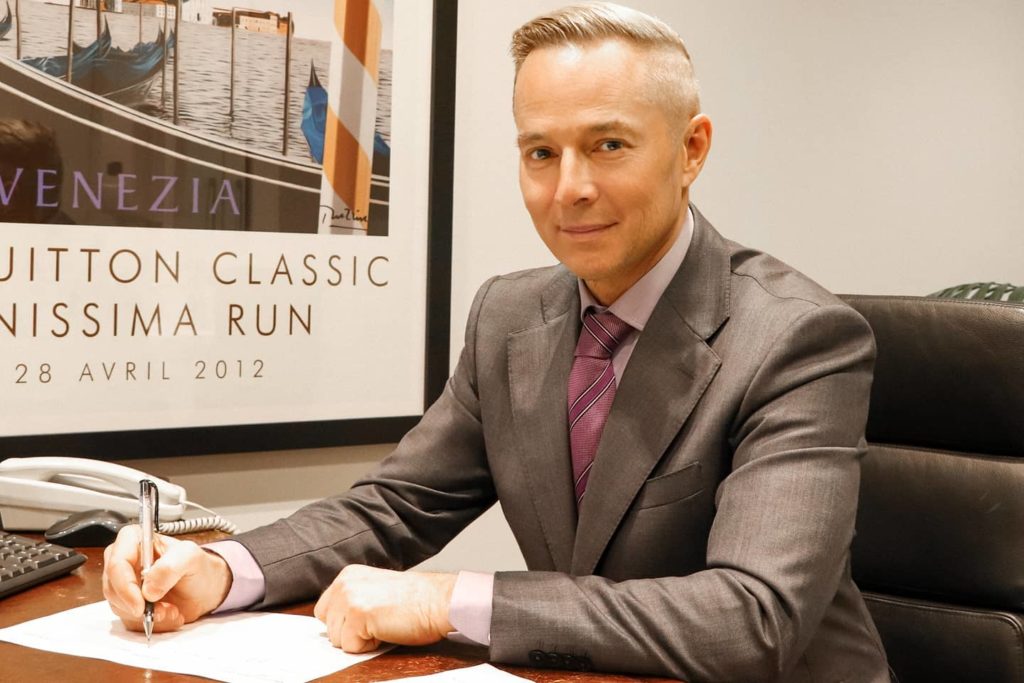
NEXT STEPS
Do your Research
- Read the Website and Blogs relevant to your procedure
- Browse our Frequently Asked Questions including how to choose a Surgeon for your procedure
- Download the Guides to Surgery
What to Bring to your Plastic Surgeon Consultation
- Bring a friend or relative to help discuss the information and your choices
- Take lots of notes and read the documents provided thoroughly
- Want more information before scheduling your consultation?
Book your Initial Surgery Consultation
- A Referral from your GP or specialist is helpful but NOT essential – you can have a consultation without a GP Referral
- Email us or Call in London on 07557 858156 to arrange your surgeon consultation appointment.
- Book a consultation with Mr Gittos by paying the Consultation Fee
Please contact us to arrange to book a consultation with our Specialist Plastic Surgeon or to speak with our Patient Care Advisor.
Send an enquiry form today or UK phone 07557 858156 during Clinic Hours
